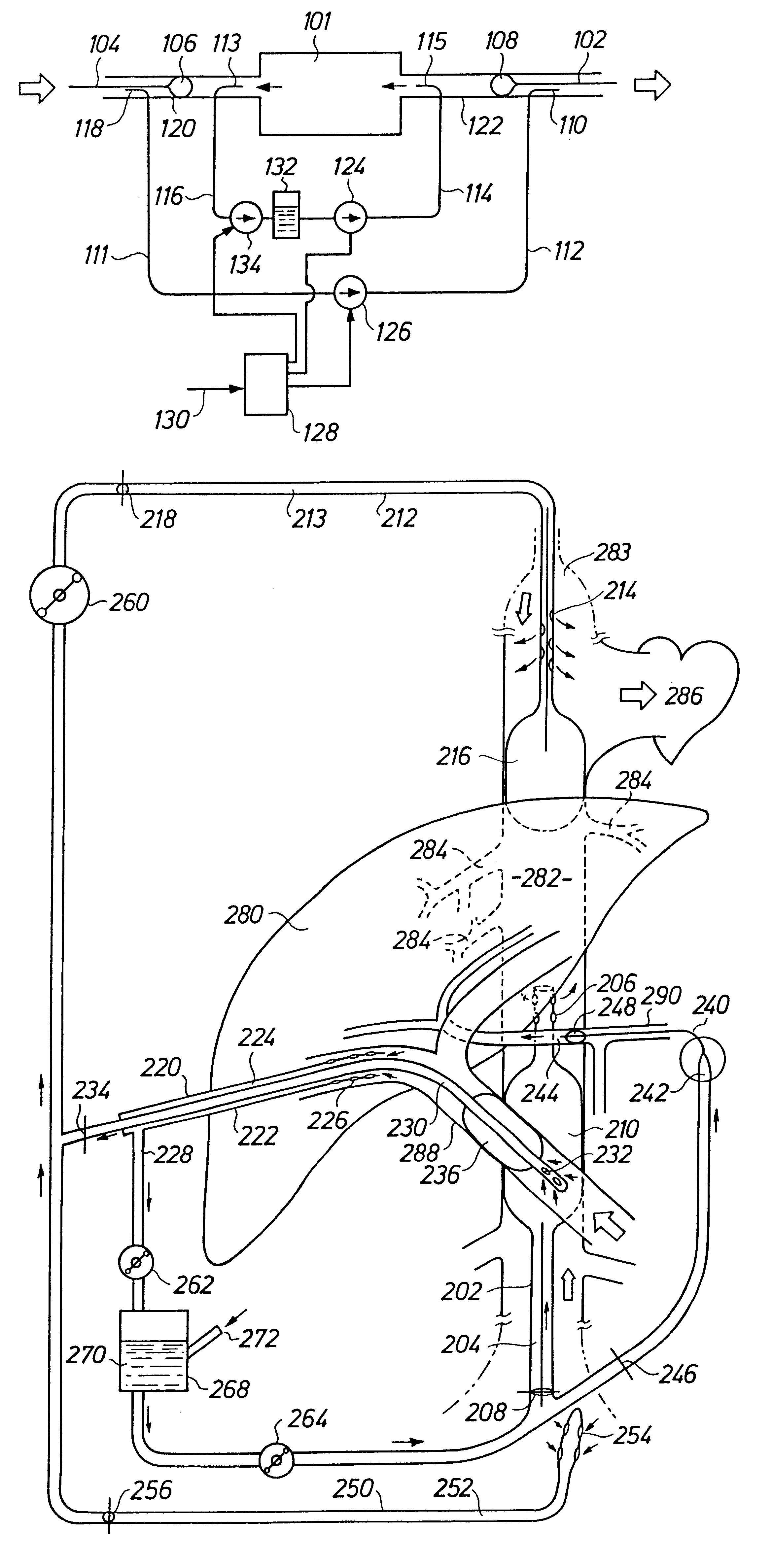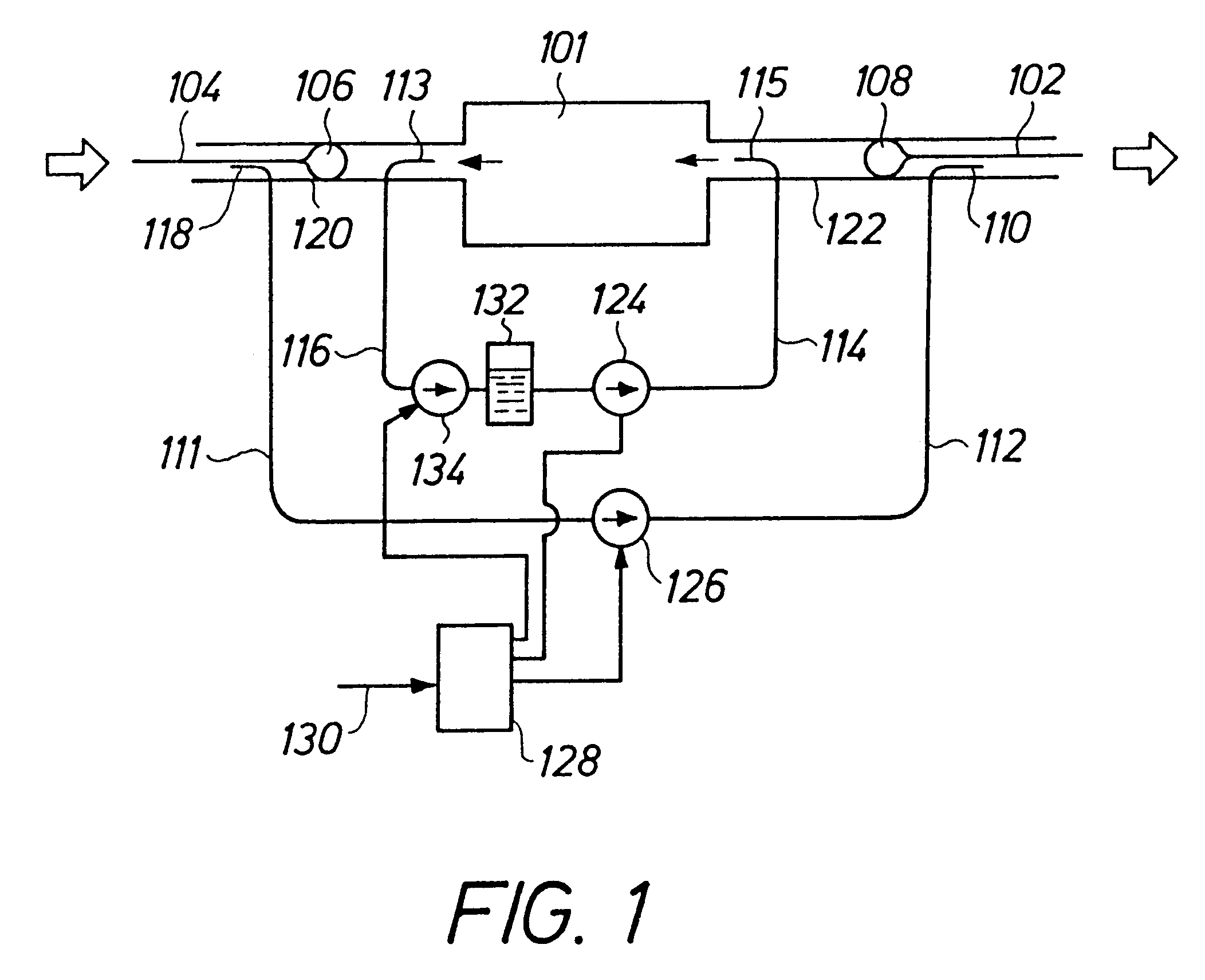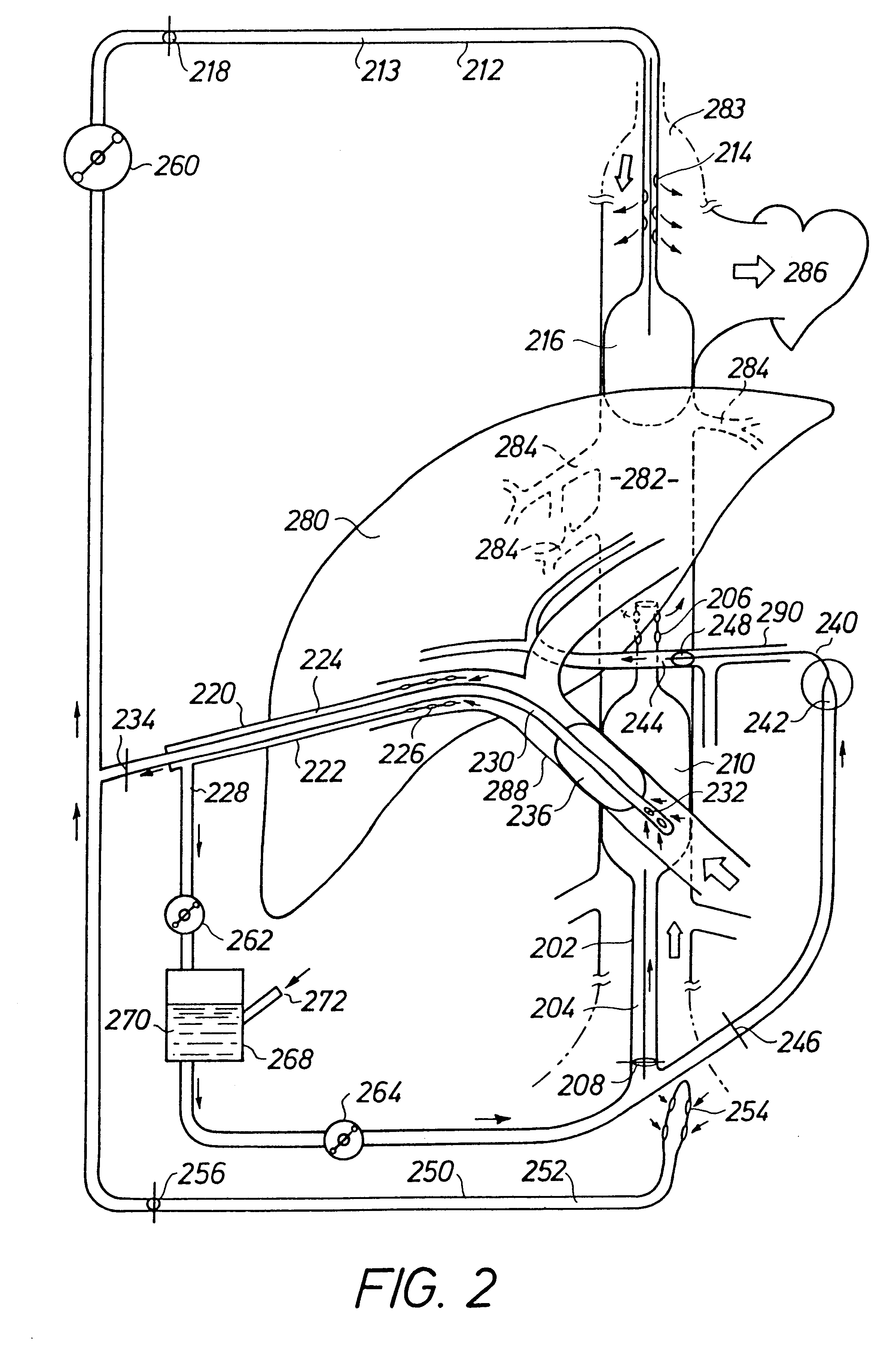Perfusion system
- Summary
- Abstract
- Description
- Claims
- Application Information
AI Technical Summary
Benefits of technology
Problems solved by technology
Method used
Image
Examples
Embodiment Construction
The invention is a method and a system for performing perfusion of an essentially isolated organ in order to perfuse said organ with a perfusion fluid, which may contain a therapeutic agent. The perfusion can either be performed in antegrade or in retrograde. Antegrade perfusion means that the flow of the perfusion fluid in the perfused organ is of the same direction as the normal systemic blood flow and retrograde means that the perfusion flows are redirected compared to the normal blood flow in the perfused organ. According to some embodiments of the invention, retrograde perfusion provides certain advantages that will be explained below.
FIG. 1 shows an organ 101 having a main blood input vessel 120 and a main blood output vessel 122. The normal direction of the blood flow is illustrated by thick arrows and perfusion fluid direction by thin arrows. The input vessel 120 and the output vessel 122 are sealed off by means of percutaneously introducible occlusive seals 106 and 108 such...
PUM
 Login to View More
Login to View More Abstract
Description
Claims
Application Information
 Login to View More
Login to View More - R&D
- Intellectual Property
- Life Sciences
- Materials
- Tech Scout
- Unparalleled Data Quality
- Higher Quality Content
- 60% Fewer Hallucinations
Browse by: Latest US Patents, China's latest patents, Technical Efficacy Thesaurus, Application Domain, Technology Topic, Popular Technical Reports.
© 2025 PatSnap. All rights reserved.Legal|Privacy policy|Modern Slavery Act Transparency Statement|Sitemap|About US| Contact US: help@patsnap.com



